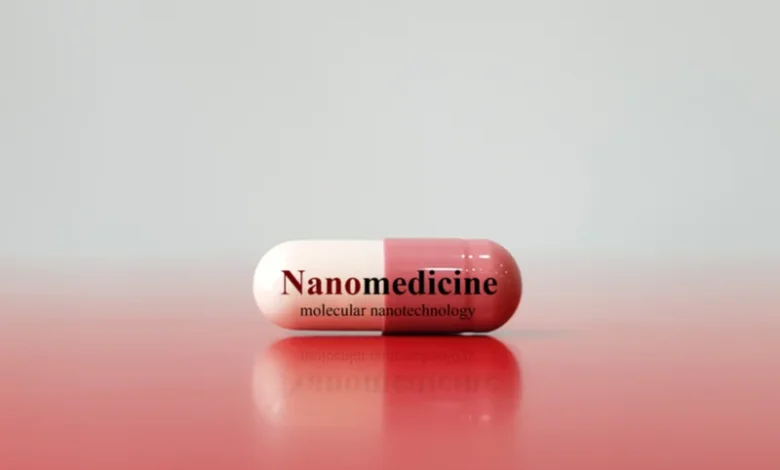Nanomedicine and Drug Development

Nanomedicine is an exciting field that combines medicine and nanotechnology to develop new and innovative drug delivery systems. The use of nanotechnology in medicine offers a wide range of benefits, including targeted drug delivery, improved efficacy, and reduced side effects. In this article, we will explore how nanomedicine is changing drug development and the future of medicine.
Nanotechnology is the science of manipulating matter at the nanoscale, which is between one and 100 nanometers in size. At this scale, materials can exhibit unique properties that are not present at larger scales. These properties are being exploited in the development of nanomedicines to improve drug delivery, enhance the efficacy of existing drugs, and create new treatments for a variety of diseases.
One of the key advantages of nanomedicine is targeted drug delivery. Conventional drug delivery systems release drugs into the bloodstream, where they can travel throughout the body and interact with healthy cells, leading to unwanted side effects. Nanoparticles, on the other hand, can be designed to target specific cells or tissues, delivering drugs directly to the site of disease. This targeted approach can improve drug efficacy and reduce side effects, making treatments more effective and tolerable for patients.
Nanoparticles can also be designed to overcome biological barriers, such as the blood-brain barrier, which can prevent drugs from reaching their intended target. By encapsulating drugs in nanoparticles, they can be transported across these barriers and reach their target site, opening up new possibilities for treating diseases such as Alzheimer’s and Parkinson’s.
In addition to targeted drug delivery, nanomedicine is also being used to enhance the efficacy of existing drugs. Many drugs are limited by their solubility, stability, and bioavailability, which can affect their effectiveness. By encapsulating drugs in nanoparticles, these limitations can be overcome, improving drug efficacy and reducing the required dosage.
Nanomedicine is an ever-evolving field that constantly seeks to push the boundaries of what is possible in medicine. One emerging area of research in nanomedicine is the development of cell membrane-based biometric nanomedicines. These nanomedicines are designed to mimic the characteristics of living cells, providing a more natural and effective way of delivering drugs.
The cell membrane is the outer layer of a cell that controls what enters and exits the cell. It is made up of a complex mixture of lipids, proteins, and carbohydrates that work together to create a selectively permeable barrier. By using cell membrane-based materials as the basis for nanomedicines, researchers can create nanoparticles that mimic the properties of living cells, allowing them to interact with the body in a more natural way.
One of the key advantages of cell membrane-based biometric nanomedicines is their ability to evade the body’s immune system. When foreign particles enter the body, the immune system identifies them as foreign and attacks them. By using cell membrane-based materials, nanoparticles can be designed to mimic the surface of natural cells, avoiding detection by the immune system and allowing them to pass through the body undetected.
Nanomedicine is also being used to create new treatments for a variety of diseases. For example, researchers are developing nanoparticles that can detect cancer cells and release drugs to destroy them, without harming healthy cells. Other researchers are using nanotechnology to develop vaccines that can stimulate the immune system to fight diseases such as cancer and HIV.
The future of medicine is likely to be shaped by the development of nanomedicines. These innovative drug delivery systems offer a wide range of benefits, including targeted drug delivery, improved efficacy, and reduced side effects. As research in this field continues to advance, we can expect to see more and more nanomedicines entering clinical trials and ultimately reaching patients, providing new and effective treatments for a variety of disease
Cell membrane-based biometric nanomedicines can also be designed to target specific cells or tissues. By modifying the surface of the nanoparticles, they can be directed to bind to specific receptors on the surface of target cells. This targeted approach allows drugs to be delivered directly to the site of disease, reducing the amount of drug required and minimizing side effects.
In addition to drug delivery, cell membrane-based biometric nanomedicines can also be used for diagnostic purposes. By modifying the surface of the nanoparticles with specific biomolecules, they can be designed to bind to specific molecules or cells, allowing for the detection of disease markers or the identification of specific cell types.
The development of cell membrane-based biometric nanomedicines is a complex process that requires the synthesis of complex materials and the integration of biological and chemical components. However, the potential benefits of these nanomedicines are enormous, and researchers are working to optimize their properties for clinical use.
Conclusion
In conclusion, cell membrane-based biometric nanomedicines represent a promising new area of research in nanomedicine. By mimicking the properties of living cells, these nanoparticles offer a more natural and effective way of delivering drugs and diagnosing disease. As research in this field continues to advance, we can expect to see more and more cell membrane-based biometric nanomedicines entering clinical trials and ultimately reaching patients, providing new and effective treatments for a variety of diseases.





